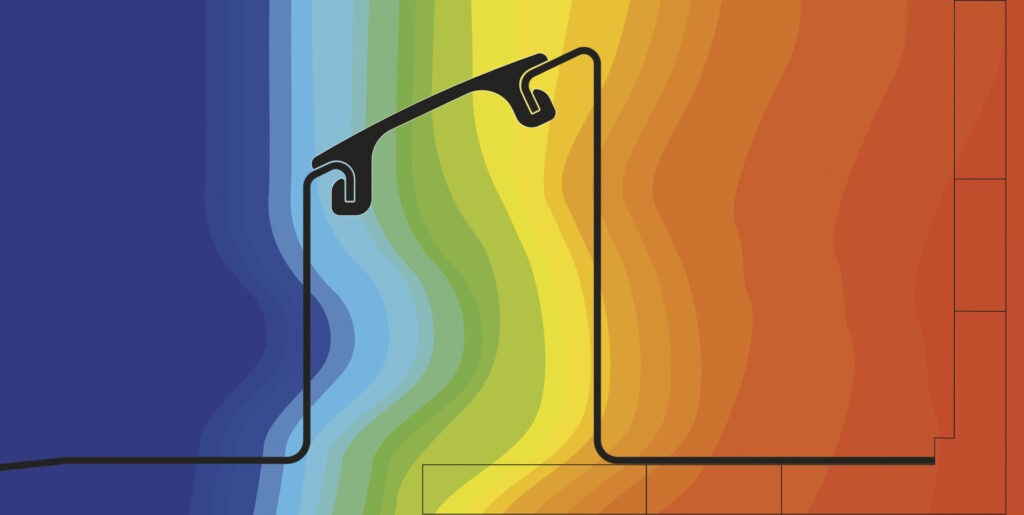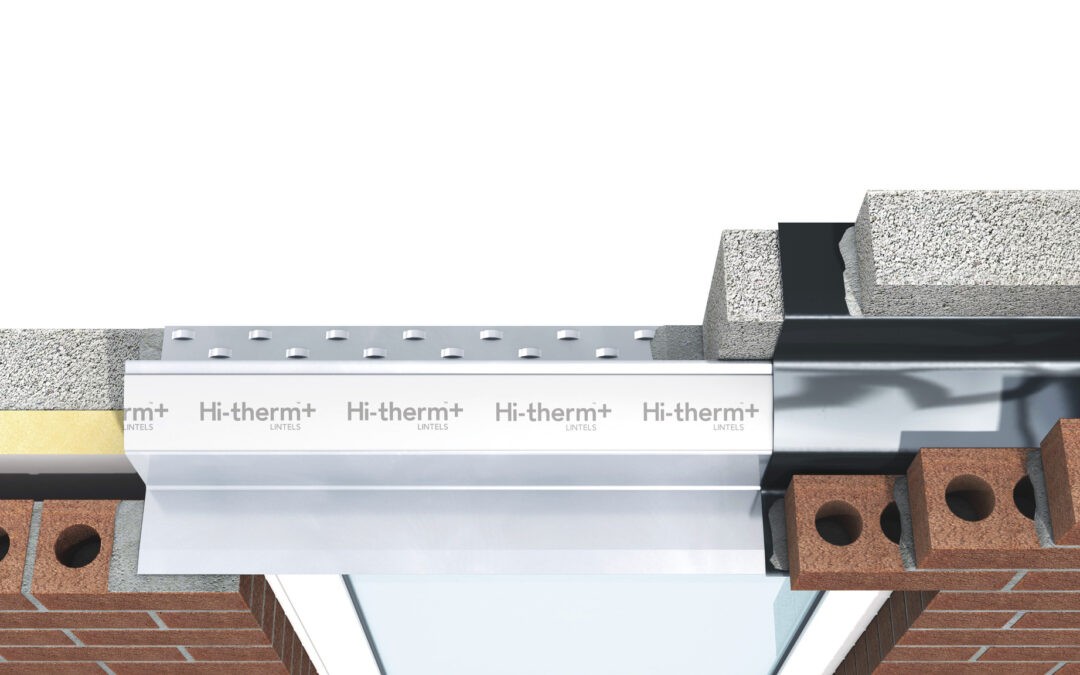 As the UK continues on its path towards more energy efficient homes and achieving its net zero targets, preventing heat loss by addressing thermal bridges has become increasingly important, as research has shown it can account for up to 30% of heat loss from buildings. Ciaran McAliskey, Specification Manager of Keystone Lintels looks at the detailing around junctions as part of the fabric first approach and why one-piece lintels can be designed to be more thermally efficient and offer better buildability.
As the UK continues on its path towards more energy efficient homes and achieving its net zero targets, preventing heat loss by addressing thermal bridges has become increasingly important, as research has shown it can account for up to 30% of heat loss from buildings. Ciaran McAliskey, Specification Manager of Keystone Lintels looks at the detailing around junctions as part of the fabric first approach and why one-piece lintels can be designed to be more thermally efficient and offer better buildability.
The fabric first approach to building design can maximise the energy performance of the structure itself and require little or no maintenance. When the components and materials within the fabric of a building are installed correctly, it’s considered to be more sustainable than installing energy saving technology or expensive renewables. The better or lower the U-values in walls, floors and roofs, the less heat is lost, resulting in enhanced thermal performance. This in turn will help to deliver the standards required and reduce heating costs.
The devil is in the details
Taking time for the details and optimising build quality will also make a difference in the fabric-first approach. For example, ensuring junctions are appropriately designed and constructed, as this makes a significant contribution to reducing heat loss. In terms of lintels, a thermal bridge occurs when a lintel spans between the inner and outer leaf of a cavity wall, allowing heat loss which ultimately leads to a drop in internal temperature and an increased demand for heating. This can increase the risk of surface condensation and mould growth.
The other concern in terms of thermal bridging is that we are neither building consistently what we design, nor detailing the right products in the right places. There are also issues with site skills and workmanship; when you fail to build correctly it undermines the good work carried out in the first instance. This can lead to a performance gap between as-designed and as-built building performance. It’s why these weak spots can significantly impact a building’s heat loss and have a detrimental effect on the overall fabric efficiency of the external wall.
Thermal continuity
With many two-piece lintels, there is an issue with a lack of continuity of insulation. To ensure the insulation is continued all the way down to the cavity closer, it is necessary to cut a piece of insulation to fit beneath the DPC membrane. This detailing is difficult and cumbersome on site and quality control issues can occur. There are solutions to address this. For instance, the Hi-therm+ Lintel is prefabricated and fitted with PIR insulation, ensuring insulation continuity and eradicating poor detailing on site.
Unlike a two-part solution which can add costs and double installation time, the simplicity of a one-piece, structurally superior top hat design assists stability between the internal and external leaves and creates stability throughout the building process.
Furthermore, a split lintel does not have an angled profile, meaning the Damp Proof Course (DPC), if installed incorrectly, can droop and cause a build-up of water in the cavity. As stop ends are not generally installed, this build-up of water can then run down the side of the lintel and into the cavity. Due the top hat profile of Hi-therm+, water will naturally run off toward the external leaf and the weep vents.
The Hi-therm+ Lintel has made a significant impact on the thermal efficiency of homes and is specified on many housebuilder projects around the UK due to its low cost and improved performance in lowering carbon emissions within the Standard Assessment Procedure (SAP). It’s proven as a solution that addresses the challenge of maintaining good detailing when skill levels are under pressure and introducing specialist techniques can be problematic.
With the energy crisis hitting households more than ever before, now is the time to start creating high performance building envelopes through the specification of materials and components which deliver where others cannot – as this can be the difference between a sustainable home and one that is energy inefficient.


Recent Comments